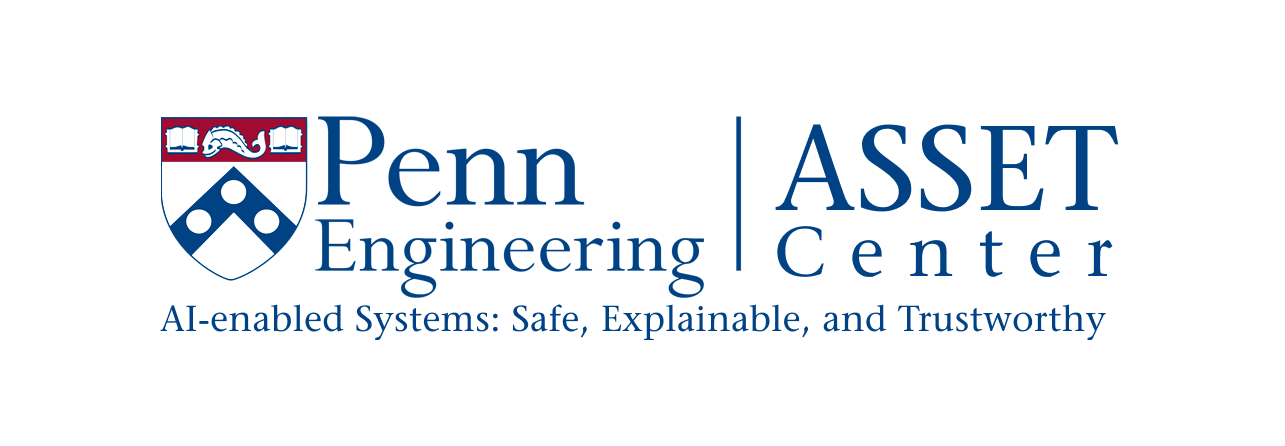Research
Projects
Faculty: R. Vidal
Enabling rapid point-of-care diagnostics by using AI to analyze lens free images of a drop of blood and produce complete blood count (CBC)
Faculty: R. Vidal and Q. Long
AI methods can be used to detect a brain tumor, assess the skill of a surgeon, count and classify blood cells, segment neurons, assess motor imitation
Faculty: C. Davatzikos and Team
AI methods can offer precision treatment guidance, treatment decision, and trial enrichment
Faculty: E. Eaton Collaborator: D. Hashimoto, MD
Reduce inadvertent injuries in minimally invasive surgery via computer vision and lifelong machine learning
Faculty: S. Goel
Design new optimization algorithms and architecture fixes to enable current large language models (LLMs) to solve logical “reasoning” tasks robustly and not “hallucinate”
Faculty: B. Lee
Understand and optimize the complex, interdependent dynamics in distributed computer systems, improving performance, efficiency, and reliability
Faculty: S. Guntuku
Measure and intervene to improve individual and community level health behaviors across cultures and languages using natural language processing and machine learning methods
Faculty: M. Posa
Understand and optimize the complex, interdependent dynamics in distributed computer systems, improving performance, efficiency, and reliability
Faculty: D. Lee, B. Moniri, X. Huang, E. Dobriban, H. Hassani
Conducted the first comprehensive theoretical analysis of disagreement-on-the-line and discovered a variety of new phenomena that were not observed in empirical studies
Faculty: D. Metaxa
Designing human-centered, AI-powered tools that improve people’s experiences with algorithmic media like targeted ads: We propose AdPlaylists, a browser-based system for end users to collectively control their online ad content
Faculty: C. Callison-Burch
Large language models (LLMs) are rapidly becoming adopted by users across the world. However, their performance and factual knowledge differs across languages. For geopolitical questions, these different responses are especially problematic, as they amplify differences in cultural viewpoints
Faculty: R. Vidal
Build AI systems that not only make predictions but also provide a sequence of questions and answers that explains why they made that prediction
Faculty: L. Ungar
Explain deep learning models that predict everything from politeness in different languages to outcomes in surgery
Faculty: E. Wong and R. Alur
Develop model wrappers that endow black-box models (i.e. deep networks) with formally verifiable explanations
Faculty: C. Callison-Burch
Self-interpretability with faithfulness guarantee, along with performance boost
Faculty: O. Bastani
Software systems are incorporating deep learning to solve diverse tasks including robotics control, medical diagnosis, code generation, protein synthesis, and question answering
Faculty: P. Chaudhari
Would like to build diagnostic and prognostic models using multi-source data (imaging, clinical, genetic factors) that can work across broad populations
Faculty: K. Danilidis and P. Chaudhari
Design a system that can detect other moving vehicles using minimum bandwidth and latency and under challenging illumination conditions
Faculty: K. Johnson and E. Eaton
Create a repository of multi-modal recorded patient encounters, while ensuring multi-level privacy and deidentification
Faculty: I. Lee, E. Dobriban, and O. Sokolsky
Design a framework that bounds the error rates in anomaly detection
Faculty: A. Roth and M. Kearns
Huge amounts of sensitive data are used to train ML models (in industry) or produce aggregate statistical tables (in government: e.g. Census). But aggregation is not sufficient to protect privacy
Faculty: C. Callison-Burch
Text generated by large language models has proliferated with unprecedented, viral speed. How susceptible are people to being duped by machine-generated text? Can human users be trained to detect when text they are reading did not originate with a human writer? Research-based answers will help us understand the potential threats (fraud, misinformation) and how to mitigate them
Faculty: K. Johnson
What if, instead of spending more time documenting a clinical encounter than engaging with the patient, health care providers could leverage AI-based technology to generate documentation? Could such tools enable us to think of the computational system as a partner in ensuring the safety and quality of each visit?
Faculty: A. Roth
How can we derive meaningful and actionable uncertainty estimates to individuals from ML models?
Faculty: G. Pappas and H. Hassani
Use the insights from adversarial ML to attack problems in AI safety; tools from probabilistic and adversarial machine learning
Faculty: M. Naik, R. Alur, and E. Wong
Disrupting model development in a fast-growing industry by putting neurosymbolic AI in the hands of every developer
Faculty: D. Jayaraman and O. Bastani
Shared representations facilitate flexible teaching, trust, and explanation between robots and humans
Faculty: R. Alur, O. Bastani, and D. Jayaraman
To synthesize control policies for robotic tasks using RL, user must specify rewards as numerical values associated with states. Such reward engineering requires expertise and is error prone
Faculty: H. Bastani
Allocate a limited daily budget of COVID-19 tests to screen a subset of international travelers to Greece. Targeted testing of “high-risk” travelers can maximize the number of active infections identified
Faculty: Z. Ives, J. Liang, L. Cao, S. Madden, and G. Li
Can we train AI to detect important diagnostic or predictive events in time, across multi-modal and multi-channel time series data? Can we automatically cluster related phenomena in real-time? Can we build databases and digital biobanks of time series symptoms, and instantly find similar patterns?
Faculty: I. Lee
Develop a detector that classifies input images to DNN-based perception systems as clean or adversarial
Faculty: R. Alur, I. Lee, and G. Pappas
Design a controller mapping raw sensory data to control actions by training a neural network based on simulation data
